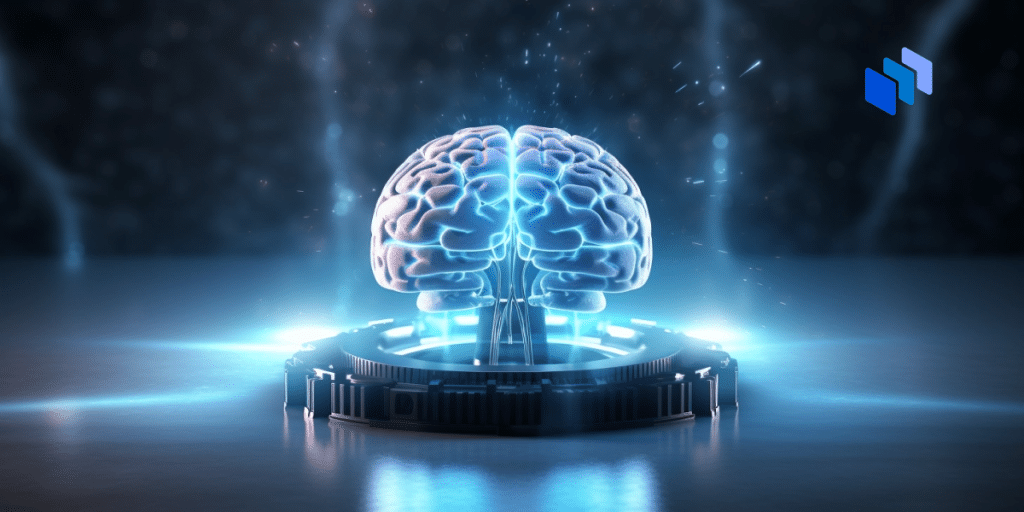AI is increasingly being used to forecast natural disasters such as earthquakes. But more than ten years after Hurricane Sandy left homes in New York without power, meteorologists are beginning to embrace artificial intelligence (AI) and machine learning algorithms to improve weather forecasts and make more accurate hurricane predictions.
The unpredictable and highly impactful 2023 Atlantic hurricane season, with 17 named storms as of October, reiterates the urgency for more accurate predictive models. Against this backdrop, AI-based weather models are emerging as a potent solution. The European Center for Medium-Range Weather Forecasts (ECMWF) has begun blending AI into its traditionally physics-based European Model, offering forecasts in mere minutes instead of hours taken by conventional models.
AI is increasingly seen as a potential silver bullet in the fight against climate change. Early tests, like the prediction of Hurricane Lee, are promising and demonstrate the efficiency of AI, which operates by learning from decades of physical atmospheric data. Major tech players like Google, Nvidia, and Huawei are also investing in developing AI-based weather forecasting.
By leveraging FourCastNet, an innovative AI framework co-developed by NVIDIA, Caltech, and Lawrence Berkeley Lab, NVIDIA Modulus was able to generate 21-day global weather trajectories with 1,000 ensemble members in just a fraction of the time traditionally required while also consuming 1,000 times less energy. This breakthrough significantly enhances the capability to capture low-probability, high-impact weather events, offering a transformative approach to weather prediction and risk assessment.
AI and Meteorology: A Perfect Storm for Accurate Predictions
Integrating AI into weather forecasting heralds significant advancements in the battle against climate change. Still, many believe it has the potential to fundamentally change our approach to managing extreme weather events. High accuracy in early predictions, as evidenced by the precise forecast of Hurricane Lee, enhances public safety by providing more lead time for preparations and evacuations.
Additionally, the speed and cost-efficiency of AI models could democratize access to high-quality weather data. Running on standard PCs and requiring only a fraction of the time and energy of traditional models, AI allows for more frequent and rapidly updated forecasts, empowering real-time decision-making for individuals and governments. Hybrid models that integrate AI with conventional forecasting methods promise a new echelon of comprehensive and precise forecasts, marrying the strengths of both techniques.
While the immediate benefits of AI-based weather forecasting are impressive, the technology also opens up longer-term opportunities that could revolutionize the field. The enhanced capabilities in ensemble modeling mean more simulations can be run, improving the granularity and reliability of risk assessments. This is particularly crucial for capturing low-probability but high-impact weather events.
Furthermore, the current competitive landscape, with the United States and Europe vying for supremacy in weather prediction technologies, holds the potential for collaborative breakthroughs. Pooling the advancements from both sides could usher in an era of global weather forecasting that is unparalleled in its accuracy and scope. The marriage of AI and weather forecasting stands on the cusp of significant transformations that could redefine our approach to environmental risk management. But there are still many obstacles to overcome.
Cloudy with a Chance of Error: The Risks of Relying Solely on AI for Weather Predictions
The shiny allure of AI-based weather forecasting is undeniable, yet it is fraught with limitations and challenges that warrant cautious optimism. While they may excel in speed and efficiency, questions loom about their universal applicability, mainly because one successful prediction, like Hurricane Lee, doesn’t necessarily validate the technology’s broader efficacy.
Trust and adaptation pose another hurdle; meteorologists, who have long relied on conventional models, may harbor skepticism toward these new systems. Additionally, the accuracy of AI models must be meticulously evaluated over extended periods to ascertain their reliability, especially when public safety is at stake.
AI models may be faster and less resource-intensive, but they still demand considerable data for training and validation. As the climate changes, the predictability of weather patterns may diminish, putting the reliability of AI models, which depend on historical data, into question.
Ethical and policy considerations like data governance and transparency cannot be overlooked either. Public and scientific trust hinges on the transparency of AI prediction mechanisms, a factor yet to be fully understood. While the promise of AI in weather forecasting is significant, these challenges indicate that we are in the early days of a long journey toward its seamless and trustworthy integration.
From Simulation to Construction: AI’s Role in Hurricane-Resilient Buildings
The application of AI in constructing storm-resistant buildings is also gaining considerable traction and could mark a substantial advancement in public safety and economic resilience. Researchers at the National Institute of Standards and Technology (NIST) have employed machine learning algorithms to simulate hurricanes based on over a century’s data.
This groundbreaking work allows for the developing of highly localized and granular wind speed maps, crucial for updating building codes tailored to specific geographic regions. Beyond broad guidelines, these AI-generated maps could assist engineers and urban planners in creating structures to withstand extreme weather conditions.
The speed and efficiency of machine-learning models—capable of running simulations in seconds—also democratize access to this life-saving information, making it continually easier to adapt and refine building codes.
However, regions with sparse historical weather data may find these models less reliable, raising questions about the equitable distribution of this technology’s benefits. Once again, ethical considerations around algorithmic transparency and data governance will emerge, mainly when such algorithms influence public safety policies like building codes. As we move toward integrating these AI models into mainstream construction practices, these concerns must be addressed to realize the full potential of AI in disaster-resilient infrastructure.
The Bottom Line
As we navigate the complexity of a changing climate and an increasingly unpredictable weather landscape, the integration of Artificial Intelligence into hurricane forecasting emerges as a beacon of progress. Its contributions to improving predictive accuracy, speed, and cost-efficiency mark a significant leap in meteorological sciences. With major tech firms like Google, Nvidia, and Huawei pouring resources into AI-based weather prediction and early tests showing promise, the technology is swiftly moving from conceptual to operational.
However, it’s imperative to remember that we are at the genesis of this journey. While AI’s current achievements in weather forecasting are groundbreaking, they are not yet foolproof. Essential questions remain around these models’ long-term viability, ethical implications, and adaptability to an ever-changing climate. Skepticism from seasoned meteorologists, computational demands, and concerns about data governance and transparency are challenges that can’t be ignored.
AI is not a silver bullet. It’s a powerful tool that, when used with traditional forecasting methods, can propel us into an unprecedented preparedness for extreme weather events. Yet, the marriage between AI and meteorology is still in its honeymoon phase. The interplay between AI and traditional weather forecasting methods may dictate how we prepare for and respond to environmental risks in the coming years. This balance between technological innovation and prudent caution will be the key to unlocking AI’s full potential in hurricane forecasting while ensuring public safety and trust are never compromised.









